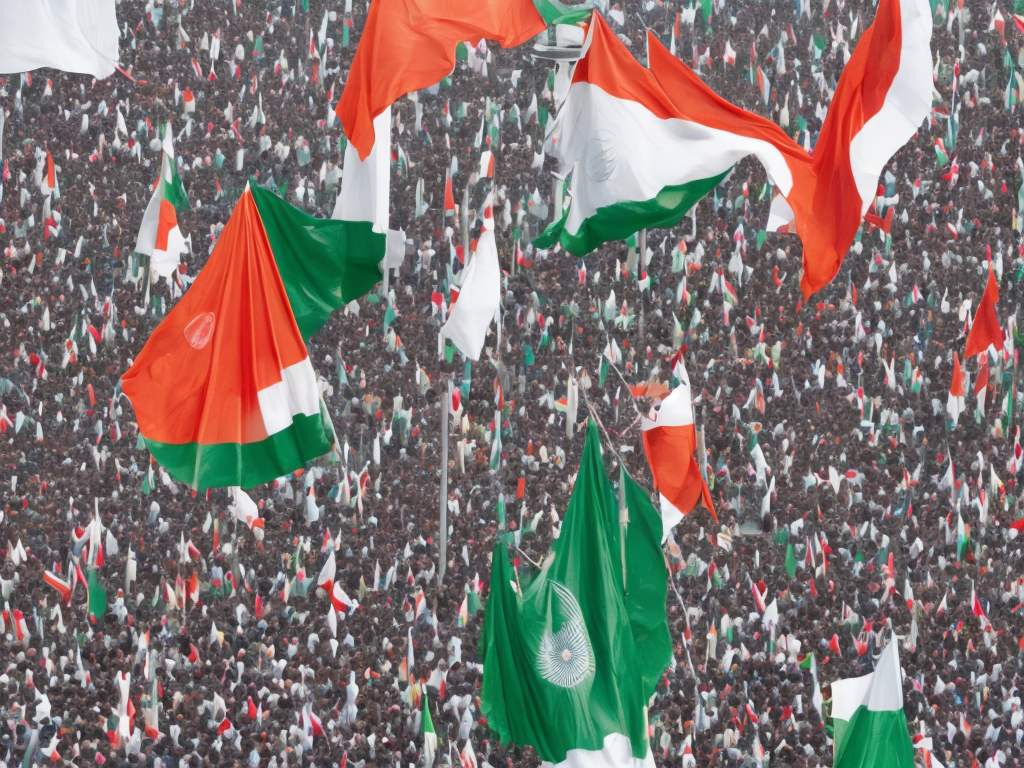
Republic Day and Independence Day are two important national holidays in many countries around the world. These days are celebrated with great enthusiasm and patriotic fervor. A significant part of these celebrations is the act of flag hoisting. While both days involve the raising of the national flag, there are some differences between the flag hoisting ceremonies on Republic Day and Independence Day.
Republic Day is celebrated annually on 26th January in India. It marks the day when the Constitution of India came into effect in 1950, replacing the Government of India Act (1935) as the governing document of India. Independence Day, on the other hand, is celebrated on 15th August to commemorate India's independence from British colonial rule in 1947. Both Republic Day and Independence Day hold immense historical and symbolic value for the people of India.
The flag hoisting ceremonies on Republic Day and Independence Day differ in terms of the significance, purpose, and protocol. On Republic Day, the President of India hoists the national flag at Rajpath in New Delhi, the capital city. This is followed by a grand parade showcasing the diversity and cultural heritage of India. The flag hoisting on Republic Day represents the coming together of the diverse states, cultures, and regions of India under a common political framework – the Constitution. It symbolizes the unity and diversity of the nation.
Independence Day is usually celebrated at the Red Fort in New Delhi, where the Prime Minister of India hoists the national flag and delivers a speech addressing the nation. This flag hoisting ceremony commemorates the struggle and sacrifices made by freedom fighters to liberate India from British rule. It is a solemn reminder of the hard-fought battle for independence and the establishment of an independent Indian nation.
The protocol for flag hoisting on Republic Day and Independence Day also differs. On Republic Day, the national flag is hoisted by the President, who is the constitutional head of the country. The President is accompanied by the Prime Minister, other cabinet ministers, and foreign dignitaries. The national anthem is sung after the flag hoisting. The flag is hoisted with utmost respect and precision, ensuring that it flies high and represents the sovereignty of the nation.
On Independence Day, the national flag is hoisted by the Prime Minister, who is the political head of the country. The flag hoisting is followed by the singing of the national anthem and the Prime Minister's address to the nation. The flag hoisting ceremony on Independence Day is a solemn and reverential occasion that reflects the gratitude and pride of the nation for the sacrifices made by its freedom fighters.
Another difference between the flag hoisting ceremonies on Republic Day and Independence Day lies in the symbolism associated with the flags. On Republic Day, the national flag is hoisted to honor the Constitution of India and the values enshrined within it. The flag represents the aspirations and collective will of the people to live in a just, egalitarian, and democratic society. It serves as a reminder of the rights and responsibilities of every citizen.
On the other hand, the flag hoisting on Independence Day is a symbol of freedom, sacrifice, and national pride. The flag represents the struggle and perseverance of countless freedom fighters who fought bravely to secure independence for India. It is a potent symbol of the nation's journey from colonization to self-rule and serves as a reminder of the importance of preserving and protecting the hard-won freedoms.
In conclusion, while both Republic Day and Independence Day involve flag hoisting ceremonies, there are notable differences between the two. Republic Day celebrates the coming together of a diverse nation under a common constitution, while Independence Day marks the country's liberation from colonial rule. The protocol and symbolism associated with the flag hoisting differ on these two important national holidays. Nonetheless, both Republic Day and Independence Day serve as occasions to reflect on the progress, ideals, and values of the nation and to reaffirm collective pride and commitment towards a better future.
 Self-Instruct
Self-Instruct